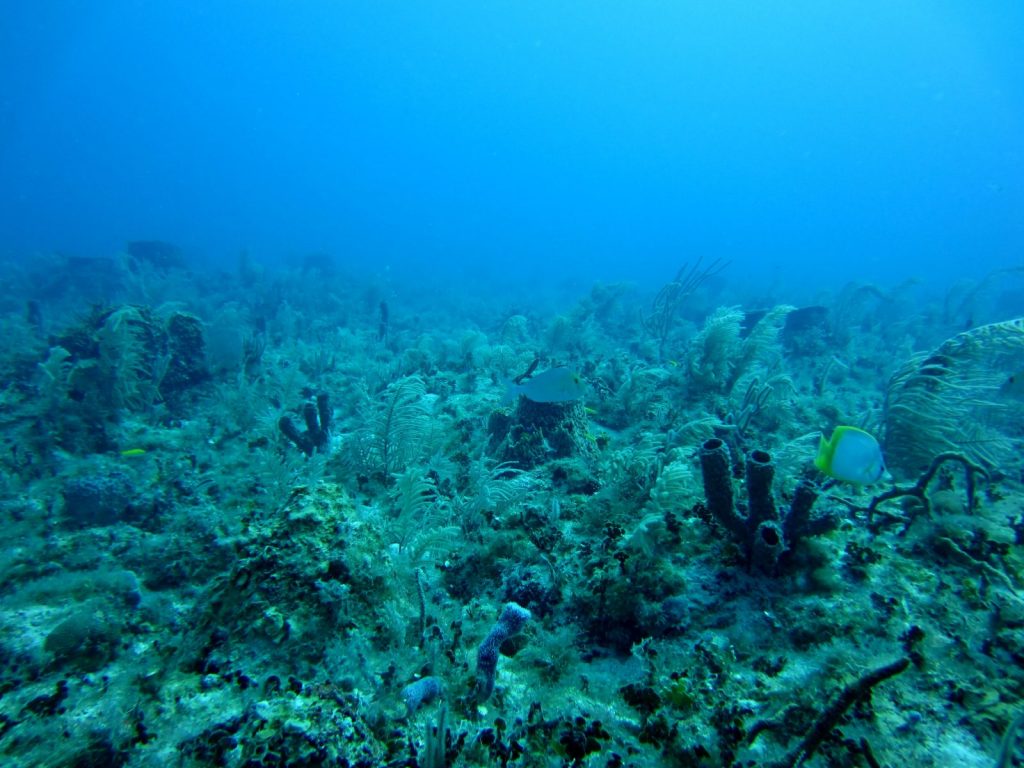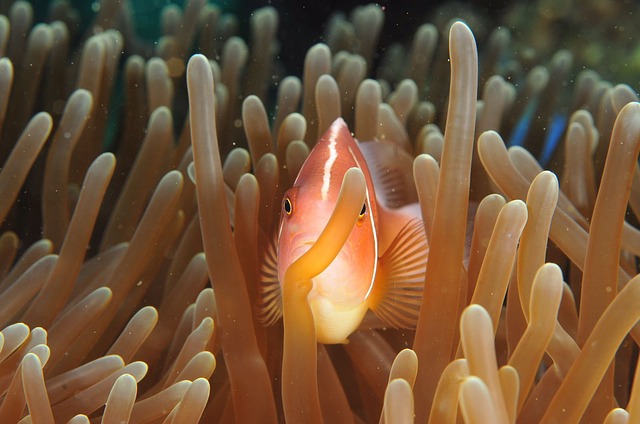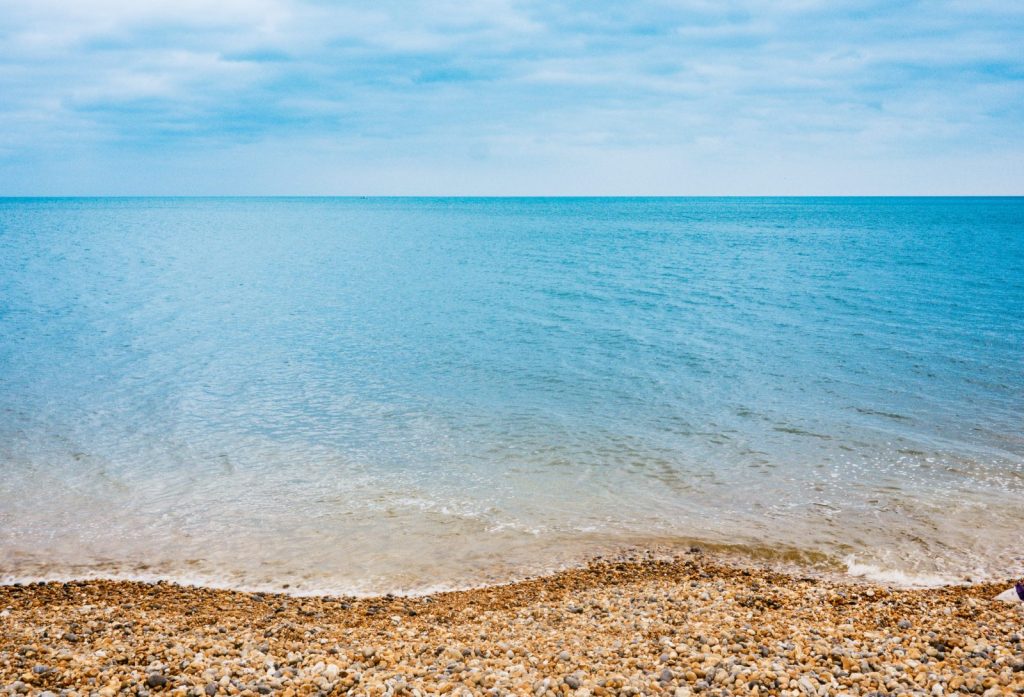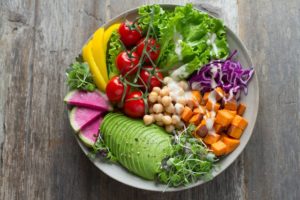Biofilms are complex communities of microbes and they are the reason your SIBO and IBS keeps coming back.

Microbes love moisture and warmth, which means our bodies are the perfect home. All the surfaces of our body – from our skin to inside the long tube of our intestines, have a coating of microbes – the ‘microbiome’. If there is moisture, warmth and food, microbial populations expand and they start to change – the microbes start to work together as a team and form a kind of microbe ‘city’ – a bit like coral communities on the sea bed.
The microbes secrete a protective gel [‘matrix’] and hide inside this stuff. This is a biofilm. If you’re wondering what one looks like then think of when you’ve forgotten to clean your teeth – dental plaque is a biofilm.

Like an anenome protecting a clown fish from attack, biofilms protect the microbes from antibiotics and herbal antimicrobials. Antibiotics kill many of the bacteria in your gut, but any hiding in the biofilm will be protected. As soon as you stop taking the antibiotics, the microbes in the biofilm will emerge and repopulate your gut – and your symptoms return.
SIBO and biofilms
If you have SIBO, this causes even more of a problem than dysbiosis in the large intestine. The small intestine is lined with tiny projections (villi) that provide a large surface area for absorbtion of nutrients. The lining of the small intestine is not designed to cope with a large bacterial load, so it becomes inflamed, and this can lead to immune-related problems such as fatigue and feeling ‘off’ (technically known as ‘sickness behaviour’), rosacea (redness in the T-zone of the face), and other issues.
How do I get rid of biofilms?
There are various herbal antimicrobials, certain foods and certain supplements that break down biofilm. One of the best blends, recommeded by many specialists in gut health, is Interphase Plus. In the table below, I list several of the more common solutions suggested by experts.
| LOVENUTTY INFO TABLE | SUPPLEMENTS TO HELP GET RID OF BIOFILMS | |
| Biofilm disruptor | How does it work? | |
| Klaire Labs Interphase Plus | Comemrcial blend that iInhibits biofilm formation and biofilm disurptor [2] | Check price |
| Monolaurin (see also lauricidin, lauric acid, glycerol monolaurate | Anti-bacterial, antifungal, biofilm disruptor [1] Derived from coconuut oil | Check price |
| Colloidal silver | Broad spectrum antimicrobial. Some evidence that it destroys biofilms [3] | Check price |
| N-acetyl cysteine | Inhibiting biofilm formation and destroys developed biofilms (biofilm disruptor) [4] | Check price |
| Wormwood [Artemesia] | Inhibits biofilms [5] | Check price |
| Oregano oil | Eradicates biofilms [6] | Check price |
| Goldenseal | Interferes with microbial communication (quorum sensing) within the biofilm. [7] | Check price |
| Berberine (contained in barberry bark & oregano grape) | Interferes with microbia communication (quorum sensing). [8] | Check price |
| Protease enzymes [taken between meals] | Breaks down biofilm structure. | Check price |
By tackling your biofilms, you have the greatest chance of achieving long-term digestive health that feels like a calm sea… 🙂

Reference list
1. Seleem, et al. In vitro evaluation of antifungal activity of monolaurin against Candida albicans biofilms. PeerJ doi: 10.7717/peerj.2148 (2016)
2. Dinicola, et al. N-acetylcysteine as powerful molecule to destroy bacterial biofilms. A systematic review. Eur Rev Med Pharmacol Sci. 18, 2942-2948 (2014)
3. Goggin et al. Colloidal silver: a novel treatment for Staphylococcus aureus biofilms? Int Forum Allergy Rhinol. doi: 10.1002/alr.21259. (2014)
4. Dinicola et al. N-acetylcysteine as powerful molecule to destroy bacterial biofilms. A systematic review. Eur Rev Med Pharmacol Sci. 18, 2942-8 (2014)
5. Choi et al. Artemisia princeps Inhibits Biofilm Formation and Virulence-Factor Expression of Antibiotic-Resistant Bacteria. PNAS doi: 10.1155/2015/239519 (2015)
6. Lu et al. Bactericidal Property of Oregano Oil Against Multidrug-Resistant Clinical Isolates. Front Microbiol. 2018; 9: 2329.
7. Cech et al. Quorum Quenching and Antimicrobial Activity of Goldenseal (Hydrastis canadensis) against Methicillin-Resistant Staphylococcus aureus (MRSA). Planta Med. 2012 Sep; 78(14): 1556–1561.
8. Aswathanarayan & Vittal. Inhibition of biofilm formation and quorum sensing mediated phenotypes by berberine in Pseudomonas aeruginosaand Salmonella typhimurium. DOI:10.1039/C8RA06413J (2018)



[…] Find out why this is pretty much inevitable if you’ve had SIBO for a while in my post about biofilms. This post also covers tactics for getting rid of the biofilms in your gut for longer lasting […]
[…] Find out why this is pretty much inevitable if you’ve had SIBO for a while in my post about biofilms, which also covers tactics for getting rid of the biofilms in your gut for longer lasting […]